Geography and climate dictate much of where good wine grapes will grow. Between the grape vines themselves, daily and yearly temperature fluctuations, the amount of rain and sunlight the grapes get, and even the amount of trace minerals in the soil, many factors determine the quality of the grape which vintners begin with, and the quality of the wine they can press and ferment from it. As a rule, grapes grow well at about 20-50 degrees north and south latitude. The climate that yields the best wine grapes is described as “Mediterranean,” with defined seasons.
In South America, Argentina and Chile lead the pack in production, and awards, with a few other countries, such as Uruguay, producing consistently well-reviewed wines for export, while Brazil’s sparkling wines win accolades.
Wine Tourism in South America
Wine tourism is taking hold in South America, and those from the northern hemisphere who are planning a trip should keep in mind that the seasons are reversed down in the southern cone, with the height of summer in January and February and wine harvests generally taking place in March and April.
Below you’ll find the main wine-producing, and thereby prime wine-tasting areas in South America, with a heavy focus on the big two, Argentina and Chile, a warning not to forget Uruguay, and information about wine in Brazil, Peru, Bolivia, Ecuador, Colombia, and even Venezuela each of which are working to carve out a space for themselves in this growing industry.
Argentina
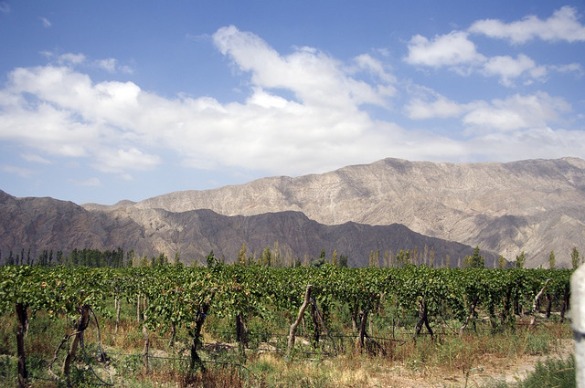
Visitors to Argentina will find that most wine tasting takes place in and around the city of Mendoza, which enjoys an extremely long spring and summer, and contributes to the health of the vines and the quality of the wines produced.
Entrepreneurial travelers and visitors to Mendoza can rent a car and fill it up with friends and strangers to visit the wineries on their own, (with a designated driver, please!), but more commonly, visitors to the area book day trips with travel agencies to take them amid the rolling hills of the wine region.
Booked-from-your home-country wine tours in Argentina generally consist of 4-and 5-star hotels and often pick up in Buenos Aires and include top-end everything, accommodations, wines and restaurants included. These tend to last from five to eight days and include the flight to Mendoza.
Wine lovers visiting the region Argentina may also like to visit areas other than Mendoza which produce excellent wines, such as Salta, to get a full picture of what Argentina has to offer. In addition to Malbec, Argentina also produces Chardonnay, Merlot, Cabernet Sauvignon and also varieties such as Tempranillo, Bonarda, Barbera and Torrontés. Information on Argentine wines can be found on the Wines of Argentina website.
Chile

Chilean wines are popular exports, and its most fabled variety is Carménère, which has made a particularly big impact after the source vines Bordeaux suffered a blight and all but disappeared in their native France. In Chile the variety continues to be strong, and great efforts are made by the Chilean government to protect Chilean agriculture, including the wine industry.
Chilean wine tourism, or enoturismo has taken off in recent years, with multi-day trips offered by various outfitters, which mainly focus on the Colchagua, Maule and Maipo valleys, which are not far from Santiago, though valleys north and south of the capital city also receive visitors.
A “wine train” takes wine tourists to Santa Cruz wineries, and includes tastings on the train as well as folkloric dance and talks on Chilean history, if visitors wish. Multi-day trips can be arranged in groups or privately, on train, by vehicle, or even by bicycle through the various valleys, and several wineries are easy to get to by public transportation, including the mass market Concha y Toro, which is just a few minutes from the end of the Santiago metro line.
For a complete listing the nation’s wine-producing regions, see the Wines of Chile website.
Uruguay
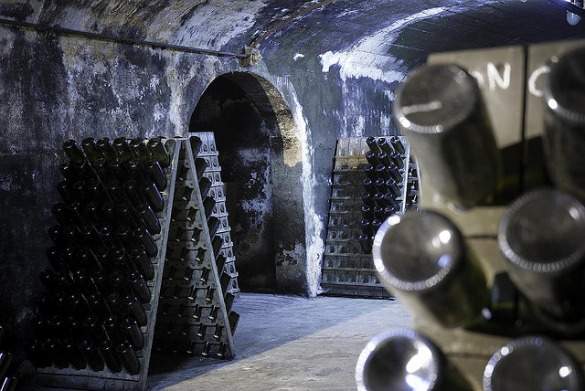
Colombia
Colombia may also surprise you with the presence of Ain Karim, a vineyard that produces wines under the brand name Marqués de Villa de Leyva, which started production in the 1980s, in the foothills near Sutamarchán. In a country which is largely tropical, and in a zone which is clearly outside of the prime grape-growing here the solution was also to grow grapes at an altitude, to fulfill the need for daily temperature fluctuation. This vineyard’s website proclaims that the vineyard was formed through a combination of inspiration and insanity.
Another Colombian wine agglomeration brings together 70 families from 16 communities in the Consorcio del sol de Oro, which together has more than 250,000 plantings, where European specifications are followed to produce Chardonnay, Cabernet Sauvingon and Sauvingon Blanc wines, exported to Bogotá (the undisputed gastronomical capital of Colombia), as well as Europe.
>> Find out why everything you’ve heard about Colombia is wrong
Brazil
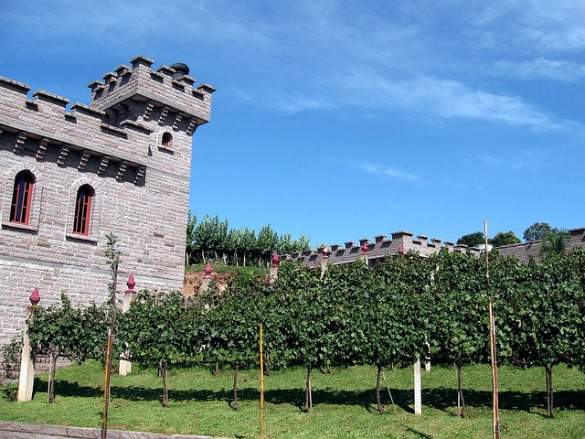
Wine tourism is doing well in Brazil, with multi-day tours and one-vineyard trips as the budget allows.
Peru
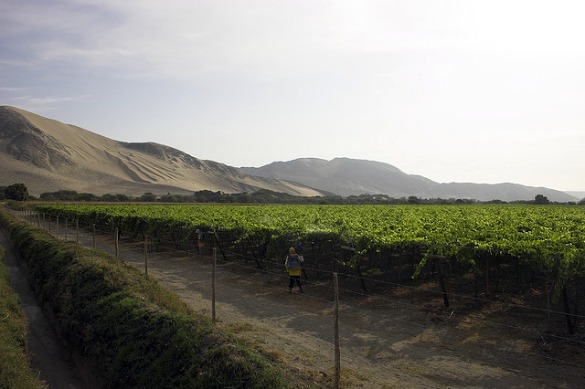
And if it turns out you don’t love Peruvian wines, near Ica is also the famous region of Pisco, for which the main ingredient in Pisco Sour (Peru’s signature drink) is named.
Venezuela
A trip through all the wine-producers of South American would be remiss in not mentioning, Venezuela, which the uninformed might also assume is too close to the equator to be able to grow wine grapes. Again, altitude is the answer, and the favorable conditions include a greater-than-30 degree daily fluctuation in temperature and good soil drainage.
Bodegas Pomar grows six varieties of red grapes and five of white grapes, with hopes to expand the market, to which tourism is essential, because though wine-drinking is increasing in Venezuela, hard alcohol is more commonly drunk.
Bolivia
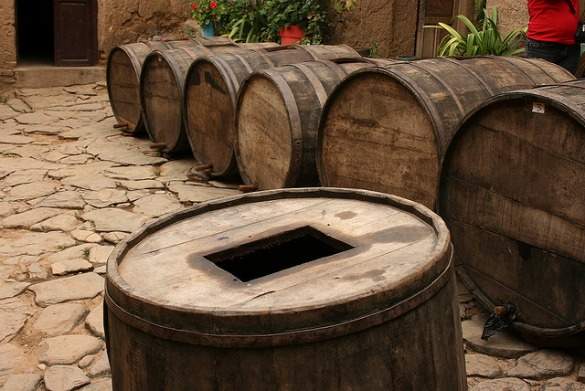
Near the municipality of Tarija, you can find wines produced by Campos de Solana, for example, whose offerings include Cabernet Sauvingon and Riesling.
As in Peru, much of the wine crop is destined to the national spirit, which in this case is Singani.
Ecuador
Ecuador actually imports quite a bit of wine from Chile, but it does produce its own as well, with grapes grown at 8,000 feet above sea level, where daytime temperatures are spring-like, and nighttime temperatures drop, which increases the grape’s sugar content, and makes for good wine.
Plan your own trip
South America has wine tasting for every budget, and in many nations. If a multi-day trip to the vineyards is not in the cards, consider a day trip. Or check out events surrounding the vendimia (wine harvest) or other wine tasting events held in cities and near vineyards.
Another option is to contact local wine and liquor stores or restaurants to see if they can host a wine tasting, and if all else fails, pack a corkscrew among your (packed) baggage, and be sure to (carefully) pack some wine for the way back home. Add some cheese, crackers, fruit or a nice meal and you can find the perfect maridaje (pairing) for your libations.
Learn more about South America:
- Five Unexpected Treasures of South America
- How to Get Around Visa Fees in South America
- 10 Places in South America to Escape the Northern Winter
Like this story? Sign up for the Daily Dose and get more BootsnAll in your inbox.